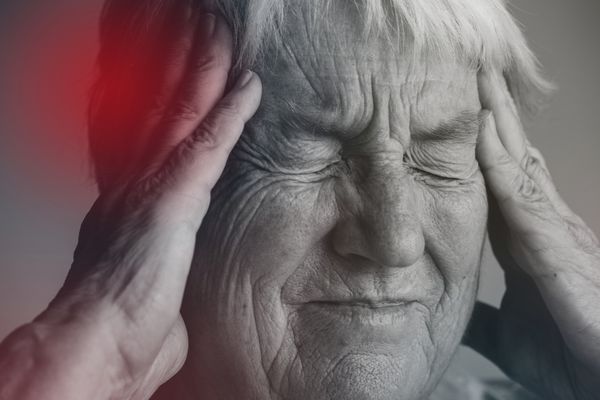
On Tasmania’s spectacular east coast, a wooden building sits at the edge of the water. Its timber is weathered by years of salt air, and at night, it glows with a radiance that reflects the warm community around it.
Every morning, here at Bicheno Surf Life Saving Club, a group of fearless swimmers heads out … not into a heated pool, but into the bone-chilling open ocean. The water reaches a maximum of 20 degrees here in summer, and drops to a frosty 13 degrees in winter.
An ocean swimming group in Bicheno. Photograph: Rob Burnett.
For some of these swimmers, the colder the better. They swear by the mental and physical health benefits of climbing out of bed and plunging into the near-freezing currents of the Tasman Sea.
If you build it, the swimmers will come
The home of the Bicheno Surf Life Saving Club is a simple structure, designed by Birrelli Architects. But it’s much more than just a building; this place enriched the community at a time when Bicheno was fighting for relevance in a declining fisheries environment. The formerly bustling cray town had lost its identity and needed a new way forward.
Jack Birrell is a Queenslander who found himself in Tasmania as a university student, studying architecture in one of the world’s greatest natural landscapes. Through his friendship with enthusiastic local – and later deputy mayor – Michael Symons, Birrell became part of the fight to reinvigorate Bicheno.
Bicheno Surf Life Saving Club. Photograph: Birrelli Architects.
“Council donated the land,” Birrell says. “Someone in the community put forward a tin shed they could build. They were going to take out a primary dune, with penguins and nesting seabirds.”
But Birrell was able to position the new hand-crafted timber building without disrupting local wildlife.
“It’s designed to look like a cray pot,” he says. “The architecture on the edge of the water was a metaphor for the industry that was the heart and soul of Bicheno.”
This visual celebration of the town’s fishing past quickly became a community beacon. Olympic champion Shane Gould even became part of the team teaching the next generation of nippers, and swimming as a pastime boomed. A decade later, the beachside building is a beloved meeting place for this enthusiastic group of locals who can’t wait to wake up in the morning and feel the icy water against their skin.
Shocking our bodies really can be beneficial
But what does the science say? Dr Margo Adler is an evolutionary biologist and the founder of the Beaker Street Festival, a Tasmanian event celebrating art and science. She’s also a cold-water swimmer, and says the science shows there could be real physiological benefits to it.
“There’s some evidence that it improves immunity,” she says. “It’s been used for a long time by athletes to reduce inflammation and speed up muscle recovery. It’s also been shown in small studies to alleviate some symptoms of disease.”
While there are no conclusive studies about its impact, Adler says there’s “promising research” that relates to a phenomenon called hormesis: the body’s response to a low-dose stressor. Such as, for example, submerging into water so cold it could shock you.
Apsley Waterhole. Photograph: Harrison Candlin.
“This is sort of an adaptive strategy for dealing with stress,” she says. “Humans, throughout their evolutionary history, had to deal with different types of stress: cold, heat, not having enough food, viruses, disease. Those trigger adaptive responses in the body. They can be protective, but sometimes they can switch on things that don’t get switched on enough in our overly comfortable environments.”
One study observed a group of men immersed in cold water for an hour. Researchers found the cold-water immersion boosted two hormones: there was a 250% increase in the “pleasure hormone” dopamine, and a 520% boost in noradrenaline, part of the body’s acute stress response. Known as neuromodulators, together these hormones control brain states, vigilance, action, reward, learning and memory processes.
A uniquely Tasmanian experience
While she emphasises the importance of checking with your doctor first and not staying in for too long, Adler says, for the general population, cold-water swimming “seems to be quite beneficial”. Besides the possible physiological impacts, she says it’s a wonderful way to get people out of bed and to start their day with an incredible beach sunrise.
Adler is so taken by the effects of cold-water swimming that she’s building a whole festival event around it. In August, by the waterfront, the Beaker Street Festival will combine icy plunges with Finnish sauna traditions, and visitors will have the chance to experience the shock, awe and exhilaration for themselves. Antarctic researchers will be on standby to share the science and stories behind plunging into ice-cold water … by choice.
“People often report that it improves their mood,” Adler says. “It’s invigorating. It makes you feel great.”
Birrell, who is both the architect of Bicheno Surf Life Saving Club and a participant there, swears by cold-water swimming. “Every afternoon I jump in,” he says. “Spiritually, your heart and your soul and your mind and body are all recharged. Cleansed. It’s like therapy.”







